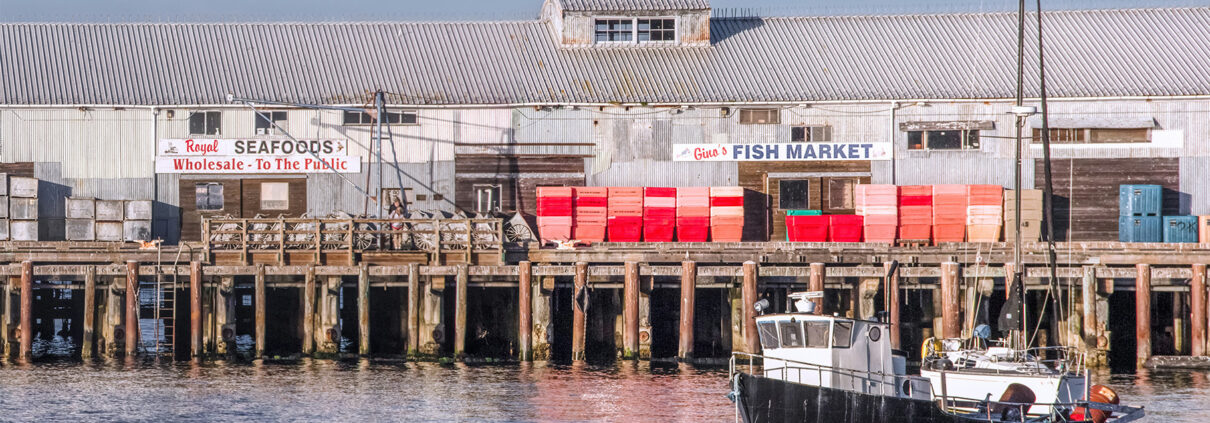Last week I attended the National Working Waterfront Network’s annual conference in San Diego to learn from people who live and work along the coast, protecting and promoting working waterfront lands, infrastructure, and waterways. It was fantastic to reconnect with OST collaborators, meet new colleagues working in this arena, and hear from people from coastal regions all over the country, including the Great Lakes and the Gulf Coast.
Working waterfronts include the coastal land and infrastructure that provide access to the coast and support ocean-dependent commercial activities. Think fishing piers, marinas, boatyards, and even aquaculture operations. They’re vital parts of coastal communities and economies, and across the country they face shared issues, such as aging infrastructure, economic and workforce development amenable to emerging blue technologies, and demand for making shorelines and communities resilient to sea level rise.
One thing that really struck me was how fortunate we are here in California to have such strong legal protections for public access to the coast. It’s something we can’t take for granted. For example, I learned about parts of coastal Maine where commercial shellfish harvesters who need access to intertidal mudflats often rely on “handshake agreements” with landowners to cross private coastal property. These agreements, some of which date back generations, are increasingly threatened by social changes, such as new residents who might not feel bound by these pre-existing, informal agreements, and climate change impacts like sea level rise, which reduce the extent of intertidal habitats. It really brought home the importance of protecting public access for all people in California.
Unsurprisingly, climate change was a thread woven throughout the conference. Intense coastal storms, sea level rise, and ocean acidification were on everyone’s minds, not as isolated issues, but as added pressures on coastal economies that are already struggling. One panelist said something that received many nods of agreement in the room: “It’s already hard to make a living in this business. Climate change just makes everything worse.” This sentiment is echoed in our work at OST: even if we’re not working directly on a climate change issue, it affects everything we do.
Despite the challenges, there were also so many inspiring examples of successful programs supporting working waterfronts and coastal communities. The common thread? Partnerships. Whether it was industry working with government or state collaborations with federal agencies, it was clear that partnerships are key. This really resonated with me because it’s a core principle of OST – that crossing boundaries between government, science, and communities is the best way to build trust and make real progress. The conference reinforced just how true that is. I left feeling energized and inspired, with a renewed sense of purpose for the work we do.




